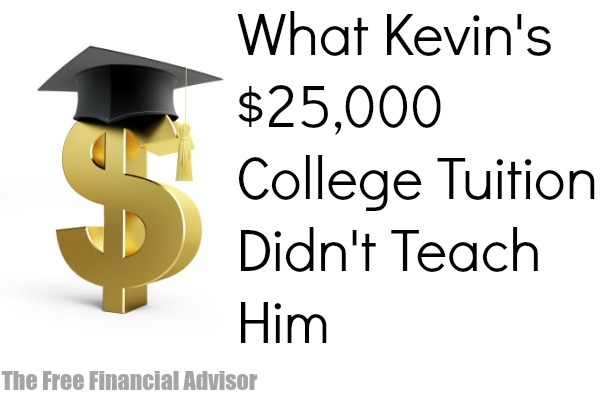
Image Source: unsplash.com
Saving for your child’s college education is smart, but did you know it’s possible to save too much in a 529 plan? Overfunding a 529 plan can lead to unexpected tax consequences, limited flexibility, and even wasted money if your child doesn’t use all the funds for qualified expenses. With college costs rising and the rules around 529 plans constantly evolving, it’s more important than ever to strike the right balance. Whether you’re just starting to save or already have a healthy nest egg set aside, understanding how to avoid overfunding your kids’ 529 plan can save you headaches down the road. Let’s explore nine practical ways to keep your college savings on track—without going overboard.
1. Understand the Contribution Limits
The first step to avoiding overfunding your kids’ 529 plan is knowing the rules. Each state sets its own maximum aggregate contribution limit, typically ranging from $235,000 to over $500,000 per beneficiary. Once the account reaches this cap, you can’t contribute more. However, you should also know the annual gift tax exclusion of $18,000 per donor per beneficiary in 2024. Understanding these limits helps you plan your contributions wisely and avoid unnecessary tax complications.
2. Estimate Future College Costs Realistically
It’s easy to overestimate how much your child will need for college, especially with all the talk about skyrocketing tuition. Use online calculators to project future costs based on your child’s age, the type of school they might attend, and inflation rates. The College Board’s annual reports are a great resource for up-to-date tuition trends. By basing your savings goal on realistic numbers, you’ll be less likely to overfund your 529 plan.
3. Factor in Scholarships and Financial Aid
Many parents forget to consider the possibility of scholarships, grants, or other financial aid when funding a 529 plan. If your child is likely to receive merit-based or need-based aid, you may not need to save as much as you think. Review your child’s academic and extracurricular strengths, and research the types of aid available at schools they might attend. This can help you adjust your savings target and avoid overfunding.
4. Revisit Your Plan Regularly
Life changes, and so do your child’s educational plans. Maybe they decide to attend a less expensive school, take a gap year, or even skip college altogether. Make it a habit to review your 529 plan at least once a year. Adjust your contributions based on updated college cost estimates, changes in your financial situation, or new information about your child’s goals. Regular check-ins help ensure you’re not putting in more than you’ll actually need.
5. Coordinate with Other Family Members
Grandparents and other relatives often want to help with college savings, but if everyone is contributing to the same 529 plan, it’s easy to lose track and overfund. Communicate openly with family members about your savings goals and the account’s current balance. Consider designating one person to monitor contributions or setting up separate accounts if needed. Coordination is key to avoiding accidental overfunding.
6. Diversify Your Education Savings
A 529 plan is a fantastic tool, but it’s not the only way to save for education. Consider splitting your savings between a 529 plan and other vehicles like a custodial account (UGMA/UTMA) or a Roth IRA. This approach gives you more flexibility if your child doesn’t use all the 529 funds for qualified expenses. Plus, it can help you avoid the tax penalties associated with non-qualified withdrawals from an overfunded 529 plan.
7. Know the Qualified Expenses
Not all education-related costs are covered by 529 plans. Qualified expenses include tuition, fees, books, supplies, and certain room and board costs. However, things like transportation, health insurance, and extracurricular activities usually don’t count. If you overfund your 529 plan and your child doesn’t have enough qualified expenses, you could face taxes and penalties on withdrawals. Familiarize yourself with what counts as a qualified expense to avoid surprises.
8. Plan for Multiple Children
If you have more than one child, you can often change the beneficiary of a 529 plan to another family member. This flexibility can help you avoid overfunding one child’s account while underfunding another’s. If your oldest child doesn’t use all their 529 funds, you can transfer the balance to a sibling, cousin, or even yourself for further education. Planning with all your children in mind helps you make the most of your savings.
9. Consider the New Rollover Rules
Recent changes to 529 plan rules allow you to roll over up to $35,000 from a 529 plan to a Roth IRA for the beneficiary, provided certain conditions are met. This new option, effective in 2024, gives you a way to use leftover funds for your child’s retirement if they don’t need all the money for college. Understanding these new rollover rules can give you peace of mind and reduce the risk of overfunding.
Smart College Savings: Balance Is Everything
Saving for your child’s education is a wonderful gift, but more isn’t always better. By understanding contribution limits, estimating costs realistically, and staying flexible, you can avoid the pitfalls of overfunding your kids’ 529 plan. Remember, the goal is to support your child’s future, without tying up more money than you need to. With a little planning and regular check-ins, you’ll be well on your way to smart, balanced college savings.
How do you approach saving for your child’s education? Share your tips or questions in the comments below!
Read More
Bank of Mom and Dad: How You’re Risking Your Retirement for Your Adult Children
Planning for the Unexpected: Why Newlyweds Should Get Life Insurance

Travis Campbell is a digital marketer/developer with over 10 years of experience and a writer for over 6 years. He holds a degree in E-commerce and likes to share life advice he’s learned over the years. Travis loves spending time on the golf course or at the gym when he’s not working.

















